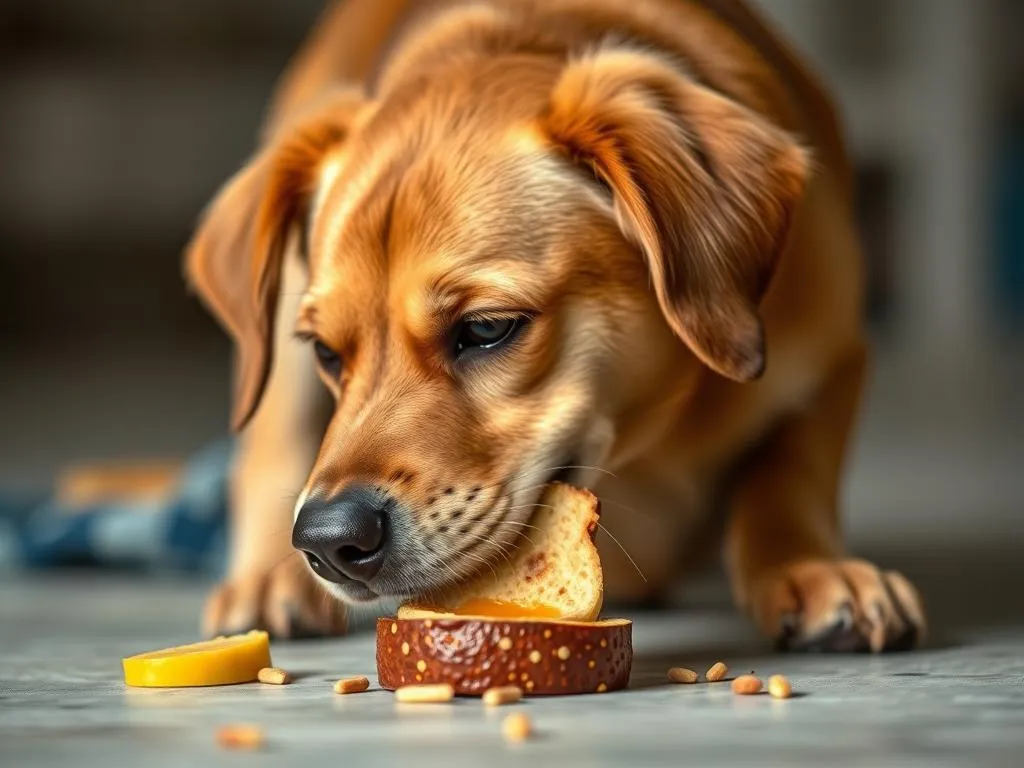
Introduction
Food stealing in dogs can be a frustrating and concerning behavior for pet owners. This instinctive action, while often amusing, poses serious risks to your dog’s health and safety. Addressing this behavior is crucial not only for the well-being of your furry companion but also to maintain a harmonious household. In this article, we will delve into various training techniques, prevention strategies, and behavioral insights to effectively tackle the issue of how to stop your dog from stealing food.
Understanding the Behavior
Why Dogs Steal Food
Understanding why dogs engage in food stealing is the first step toward curbing this behavior.
- Natural Instincts: Dogs are scavengers by nature. Instinctively, they may feel compelled to seek out food, especially if they smell something delicious.
- Hunger or Dietary Deficiencies: If your dog is hungry or lacks certain nutrients in their diet, they may resort to stealing food as a means of satisfying their cravings.
- Attention-Seeking Behavior: Dogs often steal food to gain attention from their owners, even if that attention is negative.
- Boredom or Lack of Stimulation: A bored dog may wander into areas where food is accessible, simply looking for something to do.
- Reinforcement from Past Successes: If your dog has successfully stolen food in the past, they may continue this behavior, hoping for similar rewards.
The Risks of Food Stealing
The risks associated with food stealing are significant and can affect both your dog and your household.
- Health Risks: Dogs that steal food are at risk of obesity, which can lead to various health issues. Additionally, certain human foods can be toxic to dogs, risking poisoning.
- Behavioral Issues: Food stealing can lead to increased anxiety and aggression, especially if the dog feels threatened by other pets or people when food is involved.
- Impact on the Human-Animal Bond: This behavior can lead to frustration and a breakdown in the relationship between you and your dog if not addressed properly.
Training Techniques to Stop Food Theft
Basic Command Training
One of the most effective ways to reduce food stealing behavior is through basic command training. Commands like “Leave it” and “Stay” are essential.
- Teaching “Leave it”:
- Hold a treat in your hand and let your dog sniff it.
- Close your hand and say “Leave it.”
-
Once your dog stops trying to get the treat, reward them with a different treat.
-
Teaching “Stay”:
- Start in a quiet space with your dog sitting.
- Open your palm in front of them and say “Stay.”
- Take a step back. If they stay, reward them. Gradually increase the distance.
Consistency and patience are key in training. Repetition and positive reinforcement will solidify these commands.
Positive Reinforcement Strategies
Using positive reinforcement can significantly help in how to stop your dog from stealing food.
- Reward Good Behavior: Focus on rewarding your dog when they exhibit good behavior around food. Use treats, praise, or toys as rewards.
- Types of Rewards: Different dogs respond to different types of rewards. Some may prefer treats, while others may respond better to praise or playtime.
- Creating a Positive Training Environment: Ensure your training sessions are fun and stress-free. This helps your dog associate training with positive experiences.
Teaching Impulse Control
Teaching your dog impulse control is crucial. This can be achieved through various exercises and games.
- Exercises for Impulse Control:
- Wait for Food: Place a treat on the ground. Tell your dog to “Wait” and only allow them to take it when you say “Okay.”
-
Controlled Fetch: Use a ball or toy and make your dog wait before you throw it. This helps them learn patience.
-
Games and Activities:
- Hide and Seek: Hide treats around the house and have your dog find them to encourage focus and patience.
- Obstacle Course: Create a fun course that requires your dog to navigate without rushing to food.
Benefits of Increased Patience: Teaching impulse control not only helps with food theft but also improves overall behavior, making for a more well-adjusted pet.
Environmental Management
Preventing Access to Food
Managing your dog’s environment is crucial in preventing food stealing.
- Keeping Food Out of Reach: Store food in cabinets or on high shelves where dogs cannot access them.
- Using Baby Gates or Crates: When you’re not supervising, use barriers to prevent access to areas where food is present.
- Dog-Proofing Common Areas: Place food and waste bins in dog-proof containers to eliminate temptations.
Meal Time Management
Establishing a consistent feeding routine can help reduce food stealing behavior significantly.
- Feeding Routines and Schedules: Feed your dog at the same time every day. This helps them learn when to expect food and reduces scavenging.
- Controlled Feeding vs. Free Feeding: Controlled feeding allows you to monitor your dog’s intake and reduces the chance of them stealing food.
- Using Puzzle Feeders or Interactive Toys: These can stimulate your dog mentally and physically, keeping them occupied and less likely to seek out food elsewhere.
Behavioral Modification Techniques
Redirecting Attention
Redirecting your dog’s attention when food is present can help mitigate stealing behavior.
- Strategies to Redirect Focus:
- Distraction Techniques: Use toys or engage your dog in play when food is around.
-
Training Cues: Reinforce commands like “Sit” or “Down” to keep your dog focused on you rather than food.
-
Activities to Engage and Tire Out the Dog: Regular exercise is crucial. Take your dog for walks, play fetch, or engage in other physical activities to reduce their energy levels.
-
Importance of Mental Stimulation: Incorporate brain games and puzzle toys into your dog’s routine. A mentally stimulated dog is less likely to engage in unwanted behaviors.
Addressing Underlying Issues
Sometimes, food stealing can stem from deeper behavioral issues.
- Identifying and Treating Anxiety or Stress: Observe your dog for signs of anxiety. If food stealing coincides with changes in behavior, it may be worth addressing these underlying issues.
- Consulting Professionals: If behavior persists, consult with a veterinarian or animal behaviorist to determine if there are underlying health issues or anxiety that need to be addressed.
- Possible Dietary Adjustments for Better Satiety: Consult your vet about your dog’s diet. Sometimes, adding more fiber or switching to a diet formulated for satiety can help curb hunger-driven stealing.
Professional Help
When to Seek Help
In some cases, seeking professional help is necessary.
- Signs That Professional Intervention is Needed: If your dog displays aggressive behavior when food is involved or if stealing persists despite your efforts, it may be time to consult a professional.
- Types of Professionals: Consider trainers, behaviorists, or veterinarians who specialize in canine behavior.
Finding the Right Trainer or Behaviorist
Choosing the right professional to help with food stealing is vital.
- Questions to Ask Potential Trainers: Inquire about their experience with food-related issues, training methods, and success stories.
- Importance of Certification and Experience: Look for certified trainers with a proven track record in behavior modification.
- Understanding Training Philosophies: Ensure their training methods align with your values, emphasizing positive reinforcement and humane techniques.
Conclusion
In summary, addressing the issue of how to stop your dog from stealing food requires a combination of understanding the behavior, implementing training techniques, managing the environment, and modifying behavior. It’s essential to be patient and consistent in your approach. By doing so, you create a safer and healthier relationship with your dog, enhancing your bond and ensuring both of you enjoy a happier home.
FAQs
-
What should I do if my dog steals food off the table?
Redirect their attention immediately and reinforce positive behaviors. -
Can I punish my dog for stealing food?
Punishment can often worsen anxiety and lead to more problems. Focus on positive reinforcement instead. -
How can I train my dog to ignore food on the floor?
Use commands like “Leave it” and reward them for ignoring the food. -
Is food stealing a sign of hunger?
It can be, but it may also stem from boredom or learned behaviors. Assess their diet and daily activities. -
What are some safe foods I can give my dog?
Consult with your veterinarian for a list of safe, healthy treats.
By implementing these strategies, you can effectively manage and reduce your dog’s food stealing behavior, fostering a happy and healthy environment for both of you.









